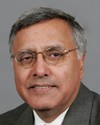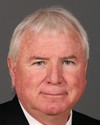I appreciate that distinction. If one were to then argue that if we were solely there by ourselves we would perhaps follow these more closely, and now, because we're part of a coalition.... If one were to follow that rule of joint civilian control, then one would follow it whether one is there by oneself or as a part of a coalition. I'm not arguing with you, but that just seems logical to me.
The next question I have is with respect to the issue of hearts and minds and the issue of the tanks. I understand that we're all concerned about the safety and security of our troops, and that's job one, for all of us. But I was struck by some comments made by the chief of military history from the U.S. Army, Lieutenant Colonel Matthew Moten, that our forces' sending Leopard tanks to Afghanistan was a mistake both on the intellectual and the operational level; although recognizing their firepower and their protective capacity, he judged them somewhat detrimental or counterproductive in a campaign for the hearts and minds of the locals.
I just want you to comment on that, if you may. If you don't want to, that's fine too.


